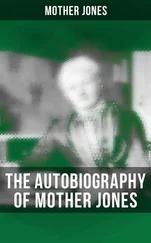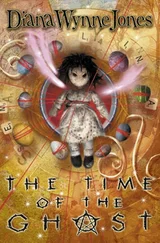Whatever their limitations, shared genes say a lot about history. The biological differences between humans and their relatives come from the mutations that have taken place since the primates began to diverge. They can be used to guess at when the human family separated from the others: the more differences, the longer ago the split. If such generic accidents happen at a regular rate, they can even be used as a 'molecular clock', which uses changes in genes to infer when two stocks last shared a common ancestor.
Molecular clocks depend on several assumptions, some of which may be justified. First, mutations must happen at a constant pace as the generations succeed. In addition, they should not damage their carriers (and, as most of those used are in parts of the DNA that do not contain any meaningful instructions, perhaps they do not). DNA errors accumulate over the years. Some are lost because, by chance, those who carry them do not reproduce, but are replaced as new ones come along. The genetic make-up of any line hence changes with time. The transformation of the inherited message is a clue as to when two species began to diverge. To date the split, there must be evidence from fossils (or from other sources such as the date of appearance of a barrier such as a mountain range) about when two extant members of the group last shared a common ancestor. To compare their genes sets the rate at which the clock ticks and makes it possible to work out the date of separation of others whose ancestors left no fossils.
Linguists use the same logic. As words are passed from parents to children errors creep in. Sometimes the changes are scarcely noticeable. In Shakespeare's As You Like It the court jester makes a speech which causes great amusement: looking at a clock he says 'Thus we may see how the world wags; 'tis but an hour ago since it was nine; and after one hour more 'twill be eleven; and so, from hour to hour, we ripe and ripe; and then, from hour to hour, we rot and rot; and thereby hangs a tale.' Just why this should be so funny is lost on modern audiences; unless they realise that in Shakespeare's time the word 'hour' sounded almost the same as the word 'whore'. Such errors can be used to date manuscripts. They were copied by hand, often by people who had little idea what they meant. As copy followed copy, more and more mistakes crept in. The number of inaccuracies gives a good idea as to when any version of an original was in fact written.
Such changes are small, but can make a big difference. Languages as distinct as Bengali and English;ire related. They owe their existence to the accumulation of tiny changes to a common ancestor spoken long ago. Take the word for kings and queens. In Sanskrit, this was raj* in Latin, rex, in Old Irish ri, in French rot, in Spanish rey and in English, royal. Different transmission errors took place in the pathway to each language. If we know the date of the split (as we do from the literary fossils known as books) we can make a linguistic clock. In Europe, this ticks at a rate which means that two languages share about eighty per cent of their words a thousand years after they divide. The language timer is an imperfect one: some words hardly change while others shift more quickly. Nevertheless, it can be used to trace the origin of modern tongues although their ancestral speakers are long dead.
The idea of a molecular clock driven by mutation is elegant and simple. As usual, the more we learn the worse it gets. It speeds up and slows down, and ticks at different rates for different genes. A similar confusion led the nineteenth-century Linguistic Society of Paris to ban discussion of the origin of languages. There have been some spectacular failures by molecular clockmakers to see the biological wood for the evolutionary trees. Even so, they have had some triumphs and these can be used to date human evolution. Several cautions are called for. The primate fossil record is so patchy that it is difficult to find firm dates with which to set the clock. Fossils and genes suggest that the primates began to diverge about sixty million years ago, the line to baboons had split off by twenty-five to thirty million years ago and that to orang-utans by twelve to sixteen million years before the present. They say nothing about iIk- date of the splir between humans, chimps and gorillas. A molecular clock based on the genes of our relatives suggests that this division took place five to seven million years before the present, with the divergence of the gorilla line before that of those to chimps and to humans.
The last common ancestor of chimps and humans hence lived about three hundred thousand human generations ago. Homo sapiens is a recent arrival even in the history of the primates, let alone in the four thousand million-year pedigree of life itself. The molecular clock suggests that the Philippines tarsier (an unremarkable small brown monkey) split from the western tarsier (which is almost identical in appearance) at about the same time as our divergence from chimps, showing just how quickly our ancestors must have evolved.
When — or how — the attributes which separate humans so absolutely from any other creature first appeared is not a question for biology. Perhaps the best we can do is to agree with Keats that we are all 'twixt ape and Plato' and leave it to individual preference just where on that long road we place ourselves.
Chapter Nine TIME AND CHANCE
The Good Book points out, in Ecclesiastes, that 'The race is not to the swift, nor the battle to the strong. hut time and chance happeneth to them all.' Evolution is all about change with time, but how things evolve is often a matter of chance. The nature of inheritance means that random events are bound to direct our genes as the generations succeed one another. As a result, much of the human condition is shaped by accident.
The importance of chance in evolution was noticed by the English cleric Thomas Malthus. He became interested in the history of the burghers of Berne and followed the records of their names over several centuries. To his surprise, many of the surnames present at the beginning of the period had gone by the end, although the number of burghers stayed about the same. Francis Galton showed why.
A surname is rather like a gene; it passes from father to son. Every generation there is a chance that a particular father does not have a male child. Perhaps he has just daughters (who lose their names on marriage) or no children at all. His name is then lost from his family line. If he has no children the name will go at once. It is also more likely to become extinct if he has a smafl family, as a limited brood will quite often consist of daughters alone. If, in a closed community like that of the Bernese bourgeoisie, this process goes on for long enough, more and more names will disappear as the years pass. Given enough time, just one surname will survive. Everyone will carry the same inherited message (at least as far as their name is concerned). In addition, the community will be more inbred than before, as rhc only mates available will be people who share the same name, all of whom descend from a common ancestor.
Just the same happens to genes. Perhaps, among the mediaeval Bernese bourgeoisie, there was a rare gene — an unusual blood group, for example. Because Berne was a small town, few people carried it. If none passed it on (because they had no children, or because by chance the gene did not get into the sperm or egg that made the next generation) then it was lost. On the other hand, the carriers might, again by chance, have had more children than the rest, in which case the variant became more common. In either case, its frequency altered (which means that the population evolved) in a manner that depends only on the accidents of time.
Читать дальше
Конец ознакомительного отрывка
Купить книгу












